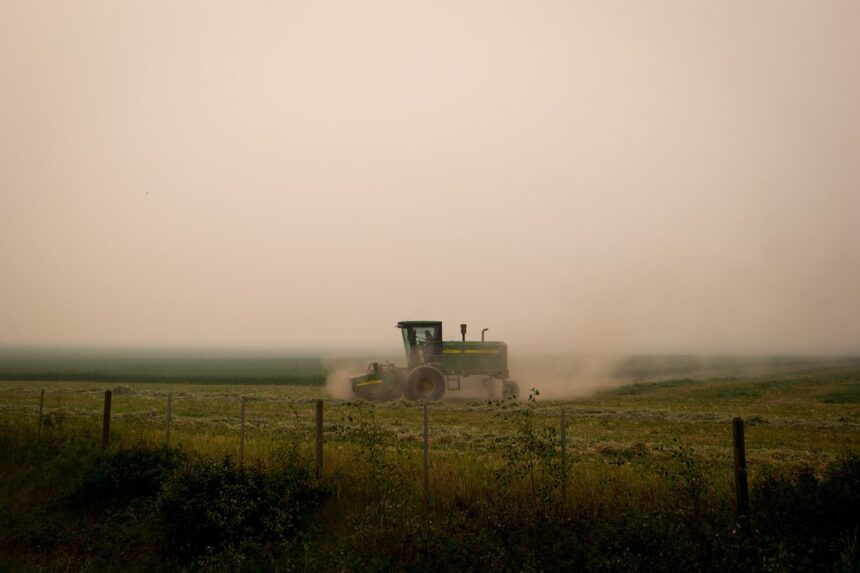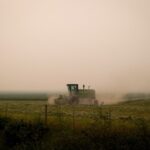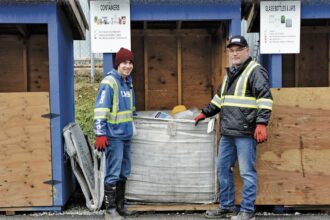As Canada endures another punishing wildfire season, an overlooked casualty has emerged beneath the hazy skies: our agricultural production. From British Columbia’s fertile valleys to Ontario’s farmlands, smoke is fundamentally altering how crops grow—and threatening the livelihoods of farmers already contending with climate unpredictability.
“The plants essentially go into survival mode,” explains Dr. Helena Versteeg, agricultural meteorologist at the University of Guelph. “They close their stomata—tiny pores that allow for gas exchange—to protect themselves from pollutants. But this same defense mechanism prevents them from properly photosynthesizing.”
The effects are becoming increasingly visible across Canadian farms. In British Columbia’s Okanagan Valley, wine producers report concerning changes in grape development, with some varieties showing delayed ripening patterns that could affect both harvest timing and flavor profiles. Meanwhile, Ontario vegetable farmers are documenting stunted growth in several crops, particularly leafy greens and certain berry varieties.
The challenge isn’t limited to plant growth. According to Agriculture Canada, pollinators such as bees show marked behavioral changes during heavy smoke periods, with activity dropping by as much as 60% during the worst air quality days. This creates a cascading effect through the ecosystem that further compromises crop yields.
“We’re witnessing disruption at multiple levels of the agricultural system,” notes Simon Lefebvre, senior analyst at the Canadian Agricultural Economics Institute. “When smoke persists for weeks, we see measurable reductions in photosynthetic activity, which translates directly to reduced yields. For some specialty crops, the quality impacts can be even more economically significant than the quantity losses.”
The economic consequences are becoming clearer. A preliminary assessment from the British Columbia Agriculture Council estimates that smoke-related losses in that province alone could exceed $87 million this year if conditions persist. These figures don’t account for longer-term impacts like soil quality changes or compromised seed production for future seasons.
For farmers, adaptation strategies remain limited and often expensive. Some greenhouse operations have invested in advanced filtration systems, while field producers increasingly rely on crop insurance—a solution that addresses financial losses but not food security concerns.
“We’re installing air quality monitoring stations throughout our orchards,” says Teresa Mackenzie, who operates a 120-acre fruit farm near Kelowna. “It helps us make data-driven decisions about irrigation timing and harvest schedules, but it’s a significant investment that eats into already thin margins.”
The federal government recently announced a $42 million emergency fund for agricultural operations affected by climate disasters, including smoke impacts. However, industry representatives argue this represents a fraction of what’s needed for meaningful adaptation.
The smoke crisis highlights the complex vulnerability of our food systems to climate change. While dramatic events like floods and droughts receive substantial attention, the more subtle but persistent threat of smoke represents what scientists call a “slow-onset disaster” for agriculture.
“This isn’t just about this season’s harvest,” warns Dr. Versteeg. “We’re concerned about cumulative effects on soil health, beneficial insect populations, and the overall resilience of agricultural ecosystems. These impacts don’t simply disappear when the skies clear.”
As wildfire seasons grow longer and more intense across North America, the agricultural sector faces difficult questions about long-term viability of certain crops in traditionally productive regions. The situation underscores the interconnected nature of environmental systems and food production.
As Canadians increasingly experience empty produce shelves and rising food prices, perhaps we should be asking ourselves: in a future of more frequent wildfires, what transformations will be required in how and where we grow our food?























